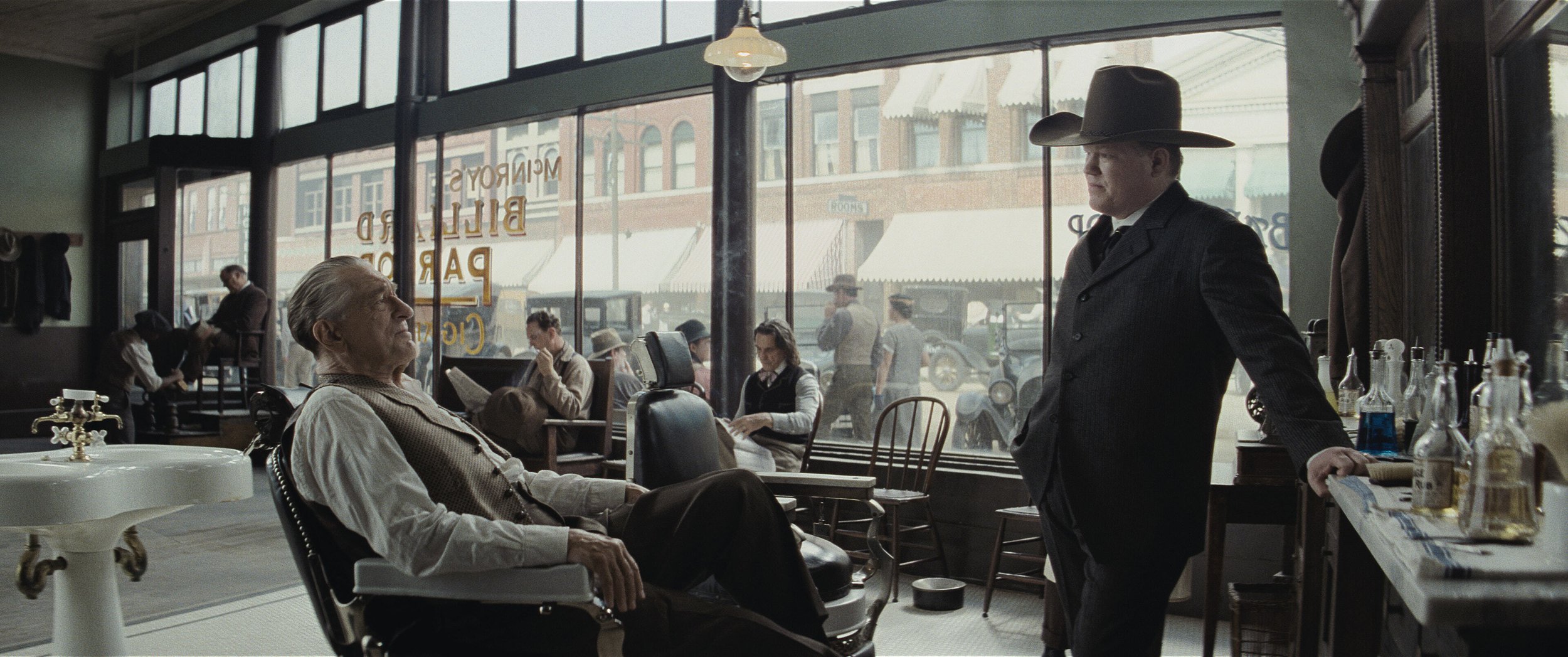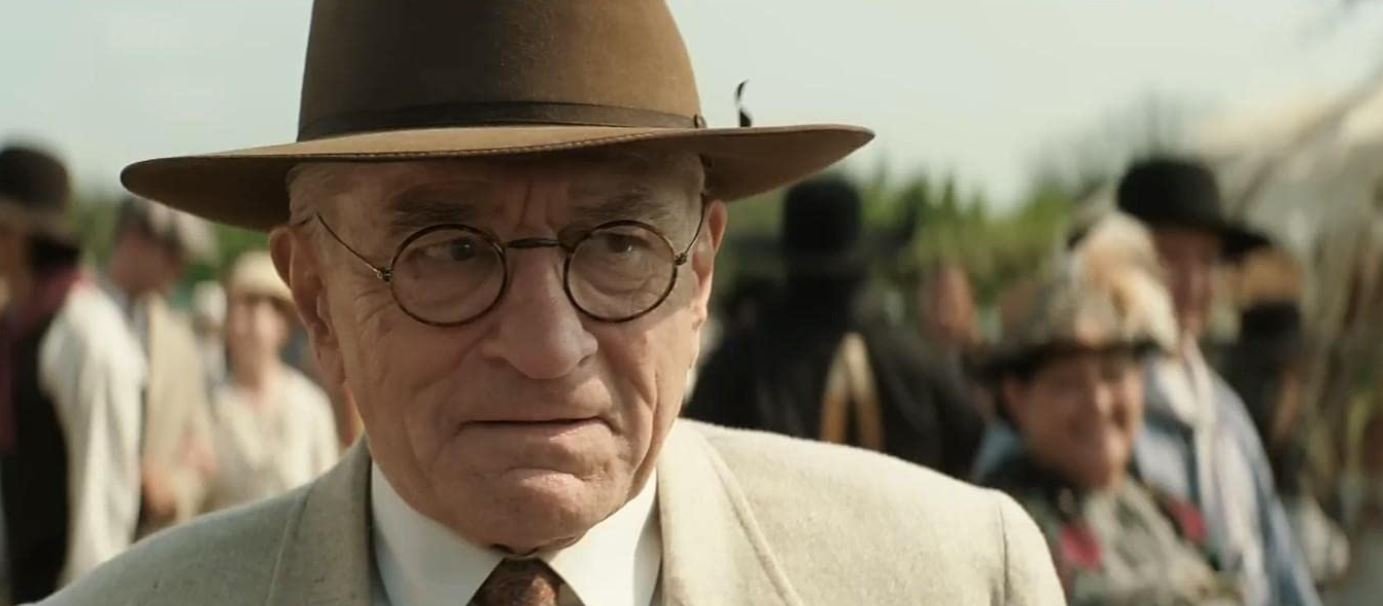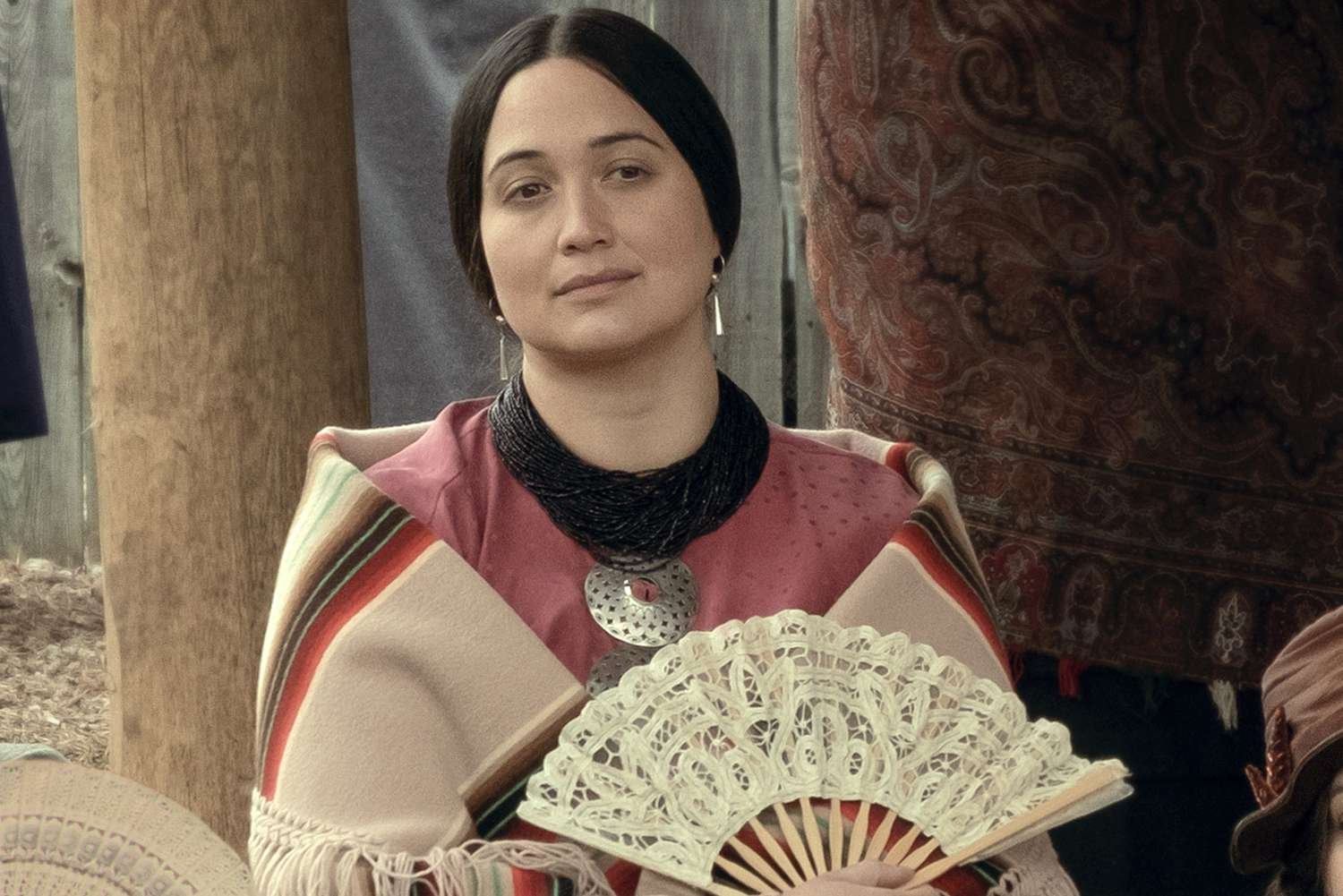Recent Articles
The Uncomfortable Conversations Within KILLERS OF THE FLOWER MOON
Martin Scorsese’s latest film, KILLERS OF THE FLOWER MOON, has already sparked conversations, both in regards the events it depicts as well as the way it chooses to present them. Both conversations tend to be uncomfortable, but maybe that’s okay in the big picture. Let’s dive in!
Martin Scorsese is the reason you’re reading this right now.
I don’t mean that literally; he’s not funding me or anything (at least not yet, I guess we’ll see how this goes). But I do have him specifically to thank for my renewed interest to write about the moving pictures the past couple of years.
Like all things good and bad, it started with an idea.
In late 2019, back when I was young and foolish, I really, really wanted to weigh in on the newly-brewing “Scorsese vs. Marvel” controversy that was permeating the atmosphere. However, there was a palpable roadblock in the way of me doing so in any sincerity. You see, to give you an idea of where my movie tastes sat at the beginning of my thirties, I had seen the entirety of the Marvel Cinematic Universe up to that point, but had failed to see even one Martin Scorsese movie. Thus, I didn’t exactly feel qualified to levy an opinion in one way or another. I definitely had a sense that people wringing their hands over Marty being mean to Marvel were being wildly over-defensive. But I couldn’t prove it. How could I?
So I decided to watch every Martin Scorsese movie.
By the time I started putting pen to paper (or, I guess, fingertip to keyboard), the Great Scorsese Film Festival had turned into a pandemic project. It’s one that I still look back on with a lot of fondness, if only because it eventually provided me the unique perspective of someone who had seen every MCU movie and every Scorsese movie*. It’s not that I thought everything he ever made was a masterpiece (massive thumbs-downs for me on NEW YORK, NEW YORK, as well as CAPE FEAR and SHUTTER ISLAND). But many are, and I picked up probably five new favorite movies from the project. At the very least, the sheer variety and totality of his work, especially in his first two decades, belied the common argument that “all he makes are mob movies!”
*With that perspective in mind, I can definitively state that Marvel fans need to chill. I wrote a whole post-mortem once the project was done that summarizes my thoughts, and they haven’t changed much over the past three years, so I’ll just link to that instead of rehashing them here.
I think about that project a lot, not just because it was the rare one I saw to completion, but because I remember feeling kind of…sad by the end. I was sad that I had let an esteemed director’s work pass me by completely up until that moment. There are people I knew that had seen most of his work in a theater, and had grown up with his movies, providing them the cinematic language that unlocked their love of film going forward. I refuse to say I had blown it; for the most part, everything one watches has value as long as you can get something productive out of it. However, I was a little annoyed at my previous lack of curiosity.
What helped curb that sense of melancholy, though, was the knowledge that Scorsese was determined to make at least one more movie before the lights go off. That movie was KILLERS OF THE FLOWER MOON, an adaptation of the 2017 non-fiction book by David Grann. By the end of 2020, it wasn’t at all clear when it was going to premiere, or (more to the point) where it would even premiere; it felt like there was an outside chance that movie theaters wouldn’t even exist within another year. And, not to be morbid, but Scorsese wasn’t a spring chicken. Who knew if he would even be around long enough to start and finish the production?
Thank god he’s still here, for a variety of reasons. But mostly, thank god he’s still here to finish up his 26th narrative feature film just in time for streamers and tech companies to start realizing, “hey, maybe we should release movies into movie theaters again” and canceled their limited release/streaming premiere in favor of a big fat rollout. This provided me not only the opportunity to see a Scorsese movie in a genuine movie theater, but to revisit one of my favorite writing projects I ever did, hopefully not for the last time.
So…let’s break down KILLERS OF THE FLOWER MOON! Is it a masterpiece? A disappointing misfire? Somewhere in between? And more importantly, how do we feel about the choice of narrative perspective? Well, I guess I can’t fully answer that last one, but I can tell you how I feel. Let’s do this!
———
KILLERS OF THE FLOWER MOON tells the true story of the murders occurring within the Osage Native American community in the 1920’s and early 1930’s in Osage County, Oklahoma. It likely won’t strike you as coincidental that these murders begin happening soon after an discovery of an oil deposit on native land make the Osage people the richest people per capita in the world. Congress quickly passes a law stating that all full or half-Osage people must have an assigned white guardian to help them manage their finances and newfound wealth, which, again, ya gotta figure is coincidental.
The film’s version of this story focuses on two real-life perpetrators (or, at least, facilitators) of many of the killings: Ernest Burkhart (Leonardo DiCaprio) and his uncle William Hale (Robert De Niro). Burkhart, a blunt simpleton who seems to love the pursuit of money over all else, is home from the war and dispatched to the care of Hale, who has established himself as the deputy sheriff of a major Osage reservation. Hale has a job for his nephew. An Osage family needs a valet. Why not get yourself set up to drive the Kyle sisters around?
Burkhart, a man who does what he’s told, gets himself situated with the Kyle family, which puts him in prime position for his uncle’s next thought: he ought to start courting one of the sisters, Mollie (Lilly Gladstone). She’s available, and the family owns a significant amount of oil headrights. What better match could there be? Mollie, a sly and witty woman with an unnatural ability to read the writing on the wall, finds Ernest charming, and the two are soon married. The first hour of KILLERS OF THE FLOWER MOON carefully and slowly establishes Ernest making Mollie a Burkhart.
The second hour depicts the callous killings of all the ancillary members of Mollie’s first family. Whether it be an ex-husband who could claim the headrights in the unthinkable event of Mollie’s death, her boisterous and headstrong sister, or her elderly mother, all soon find themselves six feet in the ground under mysterious circumstances. Obviously, we know what’s going on from the beginning of the movie. Devastatingly, however, none of this is ever depicted in the film as an ironic mystery, a detective thriller where only we the audience know whodunit. The Osage people basically know why they’re being systematically slaughtered. Mollie in particular smells a rat from the jump. But, y’know….what is she going to do? Call the police? Petition the government, the same government that got her into her particular situation in the first place? White men hold all the power from the jump. All she can do is stay alive as much and as long as she can.
The third, and unsurprisingly the most satisfying, hour can best be described as “Jesse Plemons Shows Up and Starts Busting Fools”. It’s in this section that KILLERS OF THE FLOWER MOON actually does feel not unlike one of Scorsese’s prime mob flicks; the feds show up, and the crime family starts folding like a deck of cards. I’ll defer detailing the ultimate fate of everybody involved, including Mollie herself, for now in the event you’ve yet to see it, although it does all lead to a thought-provoking and already-much discussed ending that I will be going into in a minute, so ya might as well take the three-and-a-half hours and just go watch it before going much further.
It’s a brutal, meticulously paced narrative, made all the more infuriating because you know where it’s going from the word “go”, even if you’ve never been made aware of the real world story. The second you see the old-school silent movie graphic explaining the sudden wealth of the Osage that opens the film, you start doing the “oil + white people + America” math. It makes for an uncomfortable viewing experience, made all the worse by the fact that what happened is so much more blatant, conspiratorial, and bald-faced than you could ever imagine.
It should be said that KILLERS OF THE FLOWER MOON boasts an enormous cast of people, including the aforementioned Plemons, Brendan Fraser, John Lithgow, Elden Henson, Jason Isbell, Gary Basaraba, Pat Healy and Pete Yorn, as well as indigenous actors Cara Jade Myers, Tantoo Cardinal, and Tatanka Means. Yet everything in the movie seems to come back to the central three actors at its core: Leonardo DiCaprio, Robert De Niro and Lily Gladstone. So let’s take a look at them.
I’ve long been an avowed DiCaprio skeptic, although that position might be shifting more towards “DiCaprio agnostic” nowadays. By virtue of going through Scorsese’s filmography, as well as finally checking out 2019’s ONCE UPON A TIME…IN HOLLYWOOD after a years-long self-imposed Tarantino timeout following the excruciating HATEFUL EIGHT, I feel like I’m starting to understand why DiCaprio can be stirring when he’s at his very best. I maintain that THE WOLF OF WALL STREET might be his best performance to date, if only because it taps into his unique cocktail of eternally boyish good looks and black-hearted charmless rat-bastardy. I still don’t really see what makes him so special to the degree that many of my peers do, some of them legitimately getting visibly frustrated at the prospect of him possibly never winning an Oscar (until he finally won one for 2014’s THE REVENANT, in one of the most blatant examples of a “goddamn, here, now will you shut up?” award win in my memory), but my meter for him is getting more calibrated nowadays. Sometimes he’s great; sometimes he’s annoying. Mostly, he’s serviceable.
In KILLERS OF THE FLOWER MOON, he’s on the high end of serviceable. Although I personally could have done without the constant grimace he puts on his face as Ernest (it felt like a college theater student’s idea on how to play edgy), it’s impossible to deny that when you’re looking for someone to portray a casually evil man who still somehow seems so doe-eyed that you feel like maybe he truly has no idea what he’s doing, DiCaprio’s your man. The only time DiCaprio’s vague lack of charm* falls flat is in the early scenes between him and Lily Gladstone. Although the quick courtship makes sense in context (once one of the local white men set their sights on you, survival options were limited), it felt like just one scene where Ernest displays some natural magnetism would have gone a long way for me “buying it”.
*my lawyers have begged me to clarify, “in my opinion”.
DeNiro, on the other hand….man, what a performance. I’m one of the only people in the world who thinks he might actually be improving with age. He had a great run in the 70’s as a young and edgy actor, then entered this very prolonged phase where he was between young and old, and maybe wanted to be a comedic actor? So he began floating around for about twenty years reading cue cards on the SNL stage and singing show tunes in Billy Crystal sequels, while the rest of us were left scratching our heads.
But, now? As he’s entering his ninth decade of life, he’s sort of slowed down and lost a lot of his energy, and now he’s just doing it. A lot of the mugging DeNiro face is gone, along with all of the tics and pointing. It’s the same reason his performance in the last hour or so of THE IRISHMAN was so chillingly effective. His William Hale here is plainly evil, but in a very manner-of-fact, logical way (aka the most terrifying kind of evil). It’s one of the best things I’ve seen him do in a while, and the balance between his calm, assured energy and Ernest’s cocky and naive energy tells the whole story of how the worst things in the history of humanity tend to occur.
Lily Gladstone is as great and as intriguing a talent as you’ve heard, although she’s so good that she subsequently became the only element in KILLERS OF THE FLOWER MOON that made me question the choice of perspective the movie made (more on that in a bit). In three and a half hours, you don’t quite get enough of her. Of that somewhat limited time, she spends a lot of it having to express grief and horror, which is fine and all; it’s fantastically performed and is frankly warranted by the character’s circumstances. However, you wish you could have gotten more of the Gladstone we see in the first hour of the movie, where everything about her is internalized. She gets to be sly and witty, and many things are expressed via facial expression rather than dialogue.
As for Scorsese himself, his talent for visual storytelling remains unrivaled. Just as an example from the movie itself, I won’t soon forget one of the most striking images in the entire film: Hale sitting in a movie theater, watching a newsreel unspool about the 1921 Tulsa massacres, another profound dark mark in American history that it seems many would rather forget than learn from. In a trick borrowed from a shot in Spielberg’s JAWS, the newsreel eventually begins to play out in the reflection of Hale’s glasses, giving the impression he’s sitting there just…absorbing. Evil recognizes evil and starts taking notes.
As mentioned, KILLER OF THE FLOWER MOON isn’t a perfect movie. Although the discourse around “long movies” and the “morality of intermissions” or whatever the fuck people are yammering on about is stupid, the movie does feel long, as it intentionally doesn’t have the propulsion that drives Scorsese’s very best. And, as all of you are undoubtedly aware, there have been criticisms aimed at the movie, and Scorsese himself, for choosing to tell the story from Ernest and Hale’s perspective (a decision, it should be mentioned, which deviates from the source book), rather than from the Osage people that were victimized by this abominable series of crimes.
It’s easy to dismiss those levying criticisms toward Scorsese and screenwriter Eric Roth’s decision to center its narrative around the two white perpetrators as opposed to the indigenous people at the heart of the event as bad-faith arguments from media-illiterates mad about his comments about Marvel. And, no doubt, there is certainly a faction of those kinds of people taking advantage of a real conversation in order to defend a studio that really needs no defending.
But that doesn’t mean it’s not a real conversation. It’s also a tricky problem with no real answer or work-around; the knee-jerk solution is for Scorsese and Roth to center the movie explicitly about Mollie Burkhart and her family, which would at the very least get us more Lily Gladstone. I can’t help but think, though, that this would simply shift us into the timeline where Scorsese gets faced with criticism for telling a story that’s not his to tell. The next solution down, I suppose, would be for Scorsese to just not make KILLERS OF THE FLOWER MOON at all, which would mean trading off a major last-of-his-kind filmmaker bringing attention to the Osage murders (a story that absolutely deserves the high-level film treatment) in exchange for avoiding uncomfortable conversations.
The next possible solution down the list would be for an actual Osage filmmaker to be given the agency, power and funding to tell this story themselves. And honestly? I’m all for that. This doesn’t need to be (and shouldn’t be) the only version of this story that gets committed to celluloid*. It’s a rich and tragic and important enough narrative that all voices involved deserve a chance to express their perspectives.
*And, in fact, already isn’t: check out 1959’s THE FBI STORY.
But, until such time as those movies get to emerge, this is the version that we have. This is the movie Scorsese decided to make. I’m uncomfortable armchair-quarterbacking how he should have approached it, if only because the way he did approach it is undeniably effective; I find it hard to imagine the kind of person who leaves this movie without being at least a little frustrated. It’s made all the more potent by the fact that Scorsese, in a remarkably low-key ending, seems to accept that he is complicit in the packaging of a tragedy to be consumed as entertainment.
At the end of the film, in lieu of a series of title cards informing us of our central characters’ real-life fates and conclusions, we time-jump us a bit (could be days, could be years) or so and get presented the end of the story in the style of a live radio broadcast. A live orchestra dramatically underscores the recitation of William, Ernest and Mollie’s futures after the murders are discovered. Actors stand in to read boisterous composite exclamations, actors who are decidedly not Robert DeNiro, Leonardo DiCaprio or Lily Gladstone*. This is clearly an after-the-fact dramatization of the Osage murders, presented as a true crime story meant to thrill and chill a rapturous audience.
*It should be noted, though, that one of the actors is Jack White, who looks enough like Johnny Depp these days that I briefly became desperately confused.
This is an ending that is not without historical precedence, by the way. An August 3, 1935 episode of the radio show G-Men dramatized this very same story, in presumably much the same way; the pipeline of actual murders to consumable entertainment (and the morality of said pipeline) is a whole article in and of itself. What that episode of G-Men likely didn’t feature, however, is an appearance by Martin Scorsese himself.
Yes, in the film’s final moment, Scorsese appears onstage and recites the final years of Mollie Kyle. As it turns out, she was able to remarry and gain some semblance of a life before dying of diabetes in 1937 at the age of 50. She was able to be buried with her family, although Scorsese informs us that her obituary didn’t mention the murders.
Upon reflection, the point of this is simple: Scorsese feels guilty about all of this, too. He appears to be aware that there is something kind of wrong about turning this shameful and greedy story into something that can earn other people, including himself, money. That could very possibly earn other people, including himself, awards. Even if it raises awareness of a true historical crime I feel comfortable saying most people I know, including myself, hadn’t heard about, people still stand to profit off of its telling. So the criticism he’s received, including from some members of the Osage tribe? He’s heard it. He might even agree. So he acknowledges it. He puts himself front and center in it. He literally faces it.
Does this solve anything? I suppose it depends on your point of view. One might view this as a sort of cheat from Scorsese, as if acknowledging what you’re doing while you’re doing it can possibly make anything better. On the other hand, it could be seen as a kind of creative bravery; he’s clearly not hiding or deflecting from this conversation; if anything, he’s contributing directly to it.
Either way, perhaps the ending isn’t perfect. Perhaps Scorsese’s decisions aren’t perfect. Maybe KILLERS OF THE FLOWER MOON isn’t perfect.
But at least it mentions the murders.

Best of
Top Bags of 2019
This is a brief description of your featured post.
Subscribe to our newsletter.
Sign up with your email address to receive news and updates.














